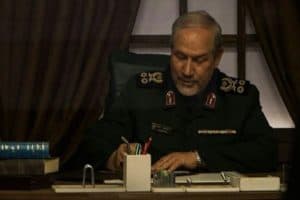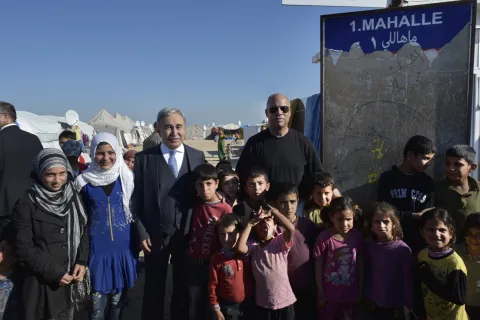No wonder the FBI is on a hiring blitz to attempt to vet what is told to be highly vetted and scrutinized refugee applicants.
****
Presidential Determination — Presidential Determination on Refugee Admissions for Fiscal Year 2016
MEMORANDUM FOR THE SECRETARY OF STATE
SUBJECT: Presidential Determination on Refugee Admissions for Fiscal Year 2016
In accordance with section 207 of the Immigration and Nationality Act (the “Act”) (8 U.S.C. 1157), and after appropriate consultations with the Congress, I hereby make the following determinations and authorize the following actions:
The admission of up to 85,000 refugees to the United States during Fiscal Year (FY) 2016 is justified by humanitarian concerns or is otherwise in the national interest; provided that this number shall be understood as including persons admitted to the United States during FY 2016 with Federal refugee resettlement assistance under the Amerasian immigrant admissions program, as provided below.
The admissions numbers shall be allocated among refugees of special humanitarian concern to the United States in accordance with the following regional allocations; provided that the number of admissions allocated to the East Asia region shall include persons admitted to the United States during FY 2016 with Federal refugee resettlement assistance under section 584 of the Foreign Operations, Export Financing, and Related Programs Appropriations Act of 1988, as contained in section 101(e) of Public Law 100-202 (Amerasian immigrants and their family members):
Africa . . . . . . . . . . . . . . . . . . . 25,000
East Asia. . . . . . . . . . . . . . . . . . 13,000
Europe and Central Asia . . . . . . . . . . . 4,000
Latin America/Caribbean. . . . . . . . . . . 3,000
Near East/South Asia. . . . . . . . . . . . 34,000
Unallocated Reserve . . . . . . . . . . . . 6,000
The 6,000 unallocated refugee numbers shall be allocated to regional ceilings, as needed. Upon providing notification to the Judiciary Committees of the Congress, you are hereby authorized to use unallocated admissions in regions where the need for additional admissions arises.
Additionally, upon notification to the Judiciary Committees of the Congress, you are further authorized to transfer unused admissions allocated to a particular region to one or more other regions, if there is a need for greater admissions for the region or regions to which the admissions are being transferred.
Consistent with section 2(b)(2) of the Migration and Refugee Assistance Act of 1962, I hereby determine that assistance to or on behalf of persons applying for admission to the United States as part of the overseas refugee admissions program will contribute to the foreign policy interests of the United States and designate such persons for this purpose. Consistent with section 101(a)(42) of the Act (8 U.S.C. 1101 (a)(42)), and after appropriate consultation with the Congress, I also specify that, for FY 2016, the following persons may, if otherwise qualified, be considered refugees for the purpose of admission to the United States within their countries of nationality or habitual residence:
- Persons in Cuba
- Persons in Eurasia and the Baltics
- Persons in Iraq
- Persons in Honduras, Guatemala, and El Salvador
- In exceptional circumstances, persons identified by a United States Embassy in any location
You are authorized and directed to publish this determination in the Federal Register.
BARACK OBAMA




 Today, Secretary of Homeland Security Jeh Johnson concluded a three-day trip to Turkey, where he visited a refugee camp, reviewed resettlement processing, spoke to a number of Syrian and Iraqi refugee families, met with government officials in Istanbul and Ankara to discuss a range of homeland security-related issues, and signed two bilateral accords to codify mutual commitment to deepen collaboration.
Today, Secretary of Homeland Security Jeh Johnson concluded a three-day trip to Turkey, where he visited a refugee camp, reviewed resettlement processing, spoke to a number of Syrian and Iraqi refugee families, met with government officials in Istanbul and Ankara to discuss a range of homeland security-related issues, and signed two bilateral accords to codify mutual commitment to deepen collaboration.